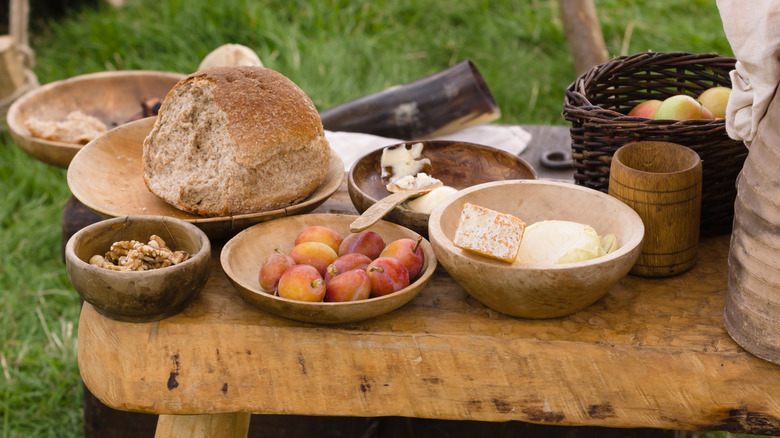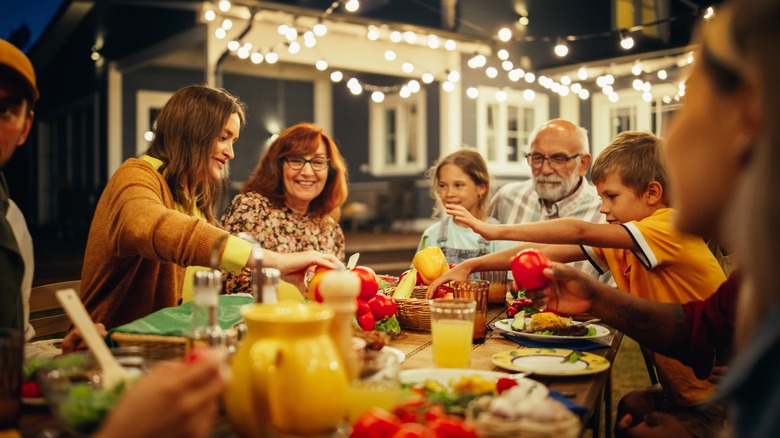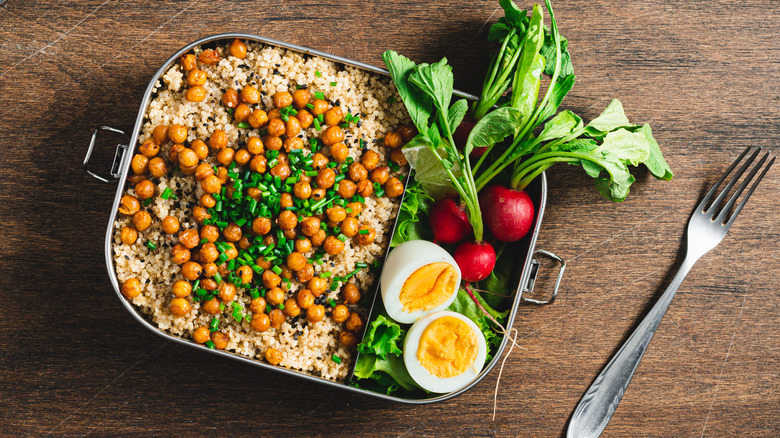The Word 'Dinner' Used To Refer To A Completely Different Meal
Since its initial invention, the word "dinner" has most commonly been used to refer to the main meal of the day. However, at what time of the day that meal took place has been far more fluid.
If you've ever read a novel from Victorian English authors like Charles Dickens, or even the more recent "Where the Wild Things Are," you might have been confused by the use of the word "supper" in these books. It seems like they're talking about dinner, since they're discussing the last meal of the day, but they're also separately talking about where they had "dinner." So, what meal are they actually talking about when they say "supper?"
The fact is that, for a very long time, the word "dinner" often referred to what we would now call our lunch. This practice started around the time of the Roman Empire and lasted through the Medieval era.
This was a time before electricity, during which it would take costly fuel to stay awake and active much past sunset. People were getting up earlier, as well. They would awaken, go about their day's labors, and come together for the main meal of the day — dinner — around noon, then continue with their day's work. Sometime after the Roman Empire fell, folks began to have a light supper just after sundown, too. This would have been the type of light fare that now fits with our ideas of lunch; think of soups and sandwiches at the end of the day instead of a heavy roast with sides (not that you can't still have sandwiches at the dinner table).
How dinner replaced supper
So, why was dinner moved out of its ancient timeslot and later into the day? Because humans moved out of their usual timeslot.
For much of human existence, we were beholden to daylight hours. We're not a nocturnal species, and so our circadian rhythms compelled us to rise and set with the sun. However, with the invention of electric lights, more individuals were able to stay active far later into the day than ever before.
Many people's schedules also shifted with this change. As the nine-to-five work structure started taking over during the last couple of centuries, some folks began spending the bulk of their days away from home. By the 1950s, with its blossoming single-income households, a couple could have one partner stay at home all day preparing a big meal for the evening. This became the largest meal of the day, during which families came together, and it effectively replaced supper. The term "supper" is still used interchangeably for "dinner" by many (especially in the U.K.), but it also refers to a lighter meal — rather than an extravagant dinner.
The invention of the modern lunch
With dinner moving into the evening timeslot, this opened the door for the modern concept of lunch to come into existence. The etymology of the word likely traces back to the old Anglo-Saxon term "nuncheon," which was used to describe a small, often handheld snack eaten between meals. So, lunches existed back in the day, but they were usually an afterthought and nothing more than a glorified snack in most cases.
Then, with the industrial revolution, workers needed larger meals to help sustain them throughout long work shifts. Dinner had begun its migration into the evening, and so it makes sense that the small snack of lunch would come to fill the vacancy it left.
Today, modern lunches are a staple of office culture around the world, and they mark the brief respite from the day's labors. The midday meal also became a lighter offering than before. Back when the midday meal was considered dinner — which was simply the largest meal of the day, originally — most folks would take in the majority of their daily calories then. Since this meal was bookended by work once it became lunch, it then made sense to avoid the drowsiness that accompanies overeating and save those more plentiful calories for the larger meal being prepared at home.


